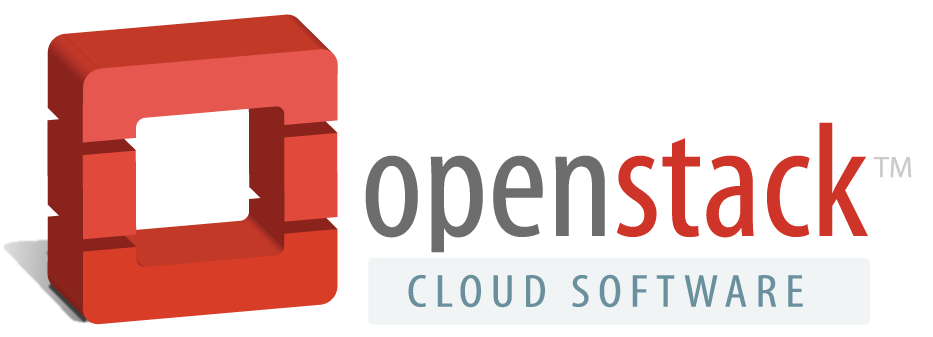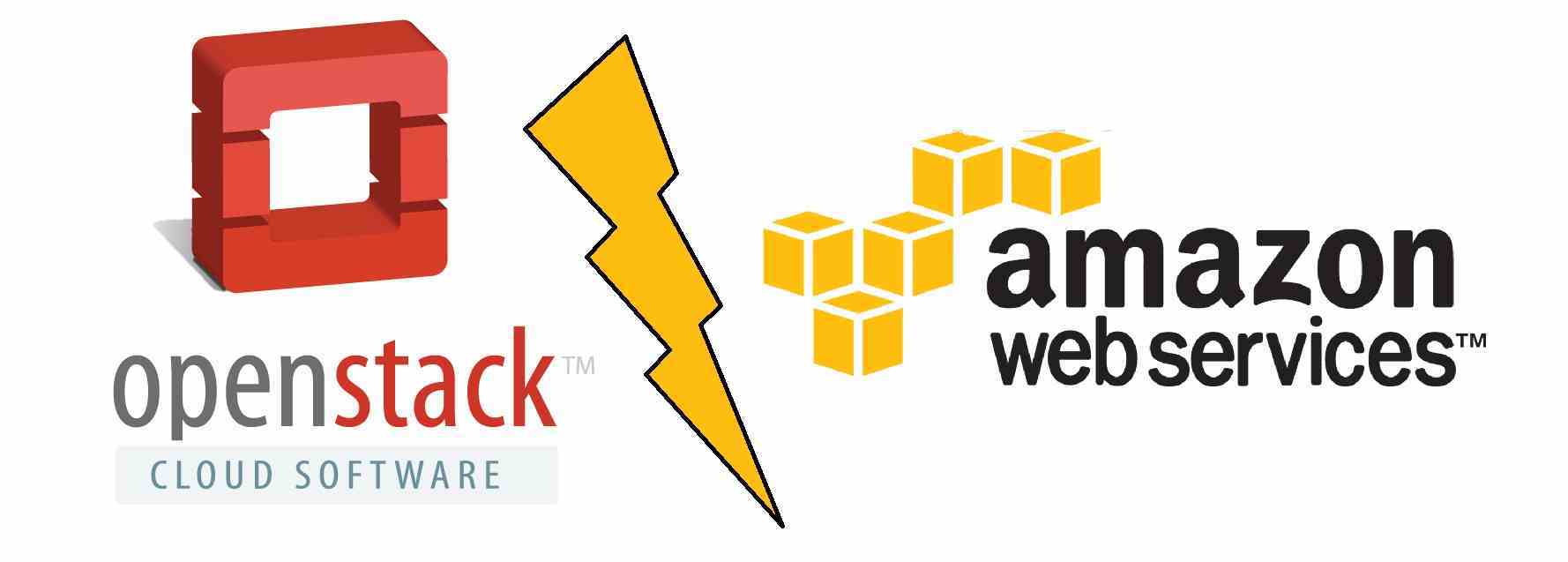OpenStack predicts the renaissance of the cloud service market, flexibility should come first
Tuesday, November 4, Paris, Palace of the Assemblies. Summit on OpenStack, the report of the chief operating officer of the association OpenStack - Mark Collier (Mark Collier). It was under such quite ordinary circumstances that a new turning point in the life of one of the largest IT corporations in the world, Amazon Web Services (AWS), was marked. Before the presentation of his report, Mark Collier made a slight artistic deviation, presenting an excerpt from the final scene of the cult film from director Stanley Kubrick “2001: A Space Odyssey”, shot back in 1968. The protagonist of the picture is a decrepit grandfather, sprawled in bed, transformed under the influence of an unknown force, a mysterious black monolith, into an unborn child. According to Mark, the scene shown is a beam that describes the current situation and the changes awaiting AWS. Having driven the public, such a grotesque presentation of the report, into a kind of confusion: whether Amazon is so bad, or vice versa, everything is so good with OpenStack, the summit participants were waiting for answers ...

“The black monolith is already in the room,” Mark began his speech. “The transforming monolith is now for Amazon the composite background on which the birth of our new (OpenStack) activity takes place.” At the moment, there are many cloud providers, including giant companies (Microsoft, Google), which also, according to Mark, resemble a sedentary old man who freely settled on a rather comfortable market for providing cloud services. But such a state of affairs cannot be eternal, and in a very short time we will witness fundamental transformations in the field of cloud services.
')
"There will no longer be a single cloud strategy that is presented to disparate customers," said Mark Collier in his speech. One market participant is simply not able to bring about mature changes, the need for which is already acutely felt in the cloud services sector. At the same time, if we consider OpenStack Clouds (OSC), then within this structure, such innovations will be quite real.
“Choosing OSC as the main global innovation platform (in terms of service flexibility) is already quite an obvious solution. Any other infrastructure platform, even if we consider, say, such a giant as AWS, will not be able to ensure an even distribution of its capacities on a global scale, ”said Mark, demonstrating a map of the world marked with 20 OpenStack Clouds nodes. In half of the regions covered, AWS cloud centers are represented, at which OSC was born. For OSC itself, the status quo can become truly iconic, symbolic, so that finally this largely virtual organization can declare itself widely.

Although OSC uses AWS infrastructure extensively, the differences between these organizations are significant. AWS is part of a single corporation that provides a limited set of services related to cloud services based on its own infrastructure platform. At the same time, OSC is a cloud structure, the functioning of which is based on the principles of open source code, and it owes its current appearance to intra-industry cooperation of a number of companies. OpenStack at this time is a completely self-sufficient service, it is already widely used now both for solving the most trivial tasks and for creating closed cloud services with wide computing capabilities on its basis.
Cloud ambitions of companies such as Microsoft, Google, IBM, provide a favorable competitive environment for OSC and can also be evidence that OSC is not just a satellite company of a larger player in the cloud services market, but it is a full-fledged one. by the participant. Using the strengths of existing companies, placing their computing power at sites of various operators, the company proved not only its independence, but also showed a competitive model of doing business.

Already, potential users of cloud services are faced with a difficult choice, what should one give their preference to? Will it be AWS or OSC, or some of the many market participants?
The director of the OpenStack Foundation, Mark Koller, sincerely believes that the turning point has finally come, the re-emergence of the services market, which will lead to the release of OSC, which he represents. At the same time, his words might have seemed somewhat contradictory to all of the above: “I am ready to admit that, despite some points, Amazon is an innovative and very promising company.” But let's deal with this in some detail.
In the situation already described, when a potential client is faced with a choice, peering intently at the clouds, where to place his data, the obvious advantage of the OSC will, of course, be the flexibility of the cloud hardware deployed to solve the client’s tasks. “One size is not suitable for everyone, but it will be enough for many,” concluded Wes Jossey, head of operations for Tapjoy, a mobile application company.

The words of a Tapjoy representative can be especially valuable, since the company is actually a classic client of cloud server services. Moreover, the company has been using the services of both services for quite some time, posting its data on both AWS and OpenStack. Tapjoy has passed its development, cooperating with AWS services, but for four months now, it has been using the Open Stack services, placing its data on their engine.
In fact, only seven “modern” configurations are now available for AWS users. Jesse noted that while designing his OpenStack cloud, he was very impressed with the number of possible configurations that were available to him. “We built exactly what we wanted from the start. The result coincided with the expectations that were formed both for the cloud structure and even for specific hardware components, which allowed us to obtain an ideal ratio of productivity at the processor and RAM levels. ”
Although the flexibility of the cloud structure from OSC has become its plus, but the declared platform also has weak points. The problems on OSC can be encountered by users posting long-term or high-loaded projects.
“The operation of any cloud service is in itself a rather non-trivial task,” says Bill Hilf, senior vice president of Helion, HP's cloud division. - “This is a real investment. All this requires real time, and here it is impossible to do without serious analytics to solve the tasks set. ”
Most of Helion’s business revolves around OpenStack. Bill also noted that at the moment there is a noticeable lack of flexibility in cloud services, and this applies not only to Amazon, but to both Microsoft and Google.

“The large scale of open cloud services makes them convenient for working in them, but they are not effective for all tasks. If you are faced with the task of broadcasting the World Cup or the Olympics live, Amazon Web Services may be your ideal choice. But if the clouds are engaged in the processing of daily, devoid of significant peak loads, processes, and even in the conditions of the minimum budget, your choice should fall on the company OpenStack Clouds or similar to it, ”concluded Bill's report.
1. AWS is a more integrated system, while OpenStack is a collection of weakly interconnected programs, for tuning which requires a deeper knowledge of administration.
2. The number of actual users in AWS is in the thousands, while in OpenStack the indicators are much more modest, but the trend shows that the number of users of the OpenStack platform is steadily increasing, this is directly related to the deployment of Rackspace cloud service on its basis.
3. Due to long-term work on the market of services, AWS has a much greater number of additional services when compared with OpenStack.
4. The choice of third-party tools for working with AWS is also broader than when working with OpenStack

5. OpenStack has thousands of developers around the world, which can be decisive in the evolution of this platform. Further improvement of AWS in the hands of a single corporation.
6. Company partners. OpenStack collaborates with Rackspace and HP, AWS maintains close contact with the closed cloud service Eucaliptus.
7. The speed of evolution. OpenStack, although it has existed for more than 3 years, still continues to work on all of its services. In AWS, services are developed and brought to the market much faster.
8. And of course, open source code OpenStack, which you can use on your own servers, or purchase ready-made solutions from a supplier. AWS is a closed system, and payment for using their services is tied to the time frame for its use.

“The black monolith is already in the room,” Mark began his speech. “The transforming monolith is now for Amazon the composite background on which the birth of our new (OpenStack) activity takes place.” At the moment, there are many cloud providers, including giant companies (Microsoft, Google), which also, according to Mark, resemble a sedentary old man who freely settled on a rather comfortable market for providing cloud services. But such a state of affairs cannot be eternal, and in a very short time we will witness fundamental transformations in the field of cloud services.
')
"There will no longer be a single cloud strategy that is presented to disparate customers," said Mark Collier in his speech. One market participant is simply not able to bring about mature changes, the need for which is already acutely felt in the cloud services sector. At the same time, if we consider OpenStack Clouds (OSC), then within this structure, such innovations will be quite real.
“Choosing OSC as the main global innovation platform (in terms of service flexibility) is already quite an obvious solution. Any other infrastructure platform, even if we consider, say, such a giant as AWS, will not be able to ensure an even distribution of its capacities on a global scale, ”said Mark, demonstrating a map of the world marked with 20 OpenStack Clouds nodes. In half of the regions covered, AWS cloud centers are represented, at which OSC was born. For OSC itself, the status quo can become truly iconic, symbolic, so that finally this largely virtual organization can declare itself widely.
Contradictions of two platforms

Although OSC uses AWS infrastructure extensively, the differences between these organizations are significant. AWS is part of a single corporation that provides a limited set of services related to cloud services based on its own infrastructure platform. At the same time, OSC is a cloud structure, the functioning of which is based on the principles of open source code, and it owes its current appearance to intra-industry cooperation of a number of companies. OpenStack at this time is a completely self-sufficient service, it is already widely used now both for solving the most trivial tasks and for creating closed cloud services with wide computing capabilities on its basis.
Cloud ambitions of companies such as Microsoft, Google, IBM, provide a favorable competitive environment for OSC and can also be evidence that OSC is not just a satellite company of a larger player in the cloud services market, but it is a full-fledged one. by the participant. Using the strengths of existing companies, placing their computing power at sites of various operators, the company proved not only its independence, but also showed a competitive model of doing business.

Already, potential users of cloud services are faced with a difficult choice, what should one give their preference to? Will it be AWS or OSC, or some of the many market participants?
The director of the OpenStack Foundation, Mark Koller, sincerely believes that the turning point has finally come, the re-emergence of the services market, which will lead to the release of OSC, which he represents. At the same time, his words might have seemed somewhat contradictory to all of the above: “I am ready to admit that, despite some points, Amazon is an innovative and very promising company.” But let's deal with this in some detail.
OpenStack gives you a wide choice.
In the situation already described, when a potential client is faced with a choice, peering intently at the clouds, where to place his data, the obvious advantage of the OSC will, of course, be the flexibility of the cloud hardware deployed to solve the client’s tasks. “One size is not suitable for everyone, but it will be enough for many,” concluded Wes Jossey, head of operations for Tapjoy, a mobile application company.

The words of a Tapjoy representative can be especially valuable, since the company is actually a classic client of cloud server services. Moreover, the company has been using the services of both services for quite some time, posting its data on both AWS and OpenStack. Tapjoy has passed its development, cooperating with AWS services, but for four months now, it has been using the Open Stack services, placing its data on their engine.
In fact, only seven “modern” configurations are now available for AWS users. Jesse noted that while designing his OpenStack cloud, he was very impressed with the number of possible configurations that were available to him. “We built exactly what we wanted from the start. The result coincided with the expectations that were formed both for the cloud structure and even for specific hardware components, which allowed us to obtain an ideal ratio of productivity at the processor and RAM levels. ”
Thunderclouds
Although the flexibility of the cloud structure from OSC has become its plus, but the declared platform also has weak points. The problems on OSC can be encountered by users posting long-term or high-loaded projects.
“The operation of any cloud service is in itself a rather non-trivial task,” says Bill Hilf, senior vice president of Helion, HP's cloud division. - “This is a real investment. All this requires real time, and here it is impossible to do without serious analytics to solve the tasks set. ”
Most of Helion’s business revolves around OpenStack. Bill also noted that at the moment there is a noticeable lack of flexibility in cloud services, and this applies not only to Amazon, but to both Microsoft and Google.

“The large scale of open cloud services makes them convenient for working in them, but they are not effective for all tasks. If you are faced with the task of broadcasting the World Cup or the Olympics live, Amazon Web Services may be your ideal choice. But if the clouds are engaged in the processing of daily, devoid of significant peak loads, processes, and even in the conditions of the minimum budget, your choice should fall on the company OpenStack Clouds or similar to it, ”concluded Bill's report.
Eight differences between OpenStack and AWS
1. AWS is a more integrated system, while OpenStack is a collection of weakly interconnected programs, for tuning which requires a deeper knowledge of administration.
2. The number of actual users in AWS is in the thousands, while in OpenStack the indicators are much more modest, but the trend shows that the number of users of the OpenStack platform is steadily increasing, this is directly related to the deployment of Rackspace cloud service on its basis.
3. Due to long-term work on the market of services, AWS has a much greater number of additional services when compared with OpenStack.
4. The choice of third-party tools for working with AWS is also broader than when working with OpenStack

5. OpenStack has thousands of developers around the world, which can be decisive in the evolution of this platform. Further improvement of AWS in the hands of a single corporation.
6. Company partners. OpenStack collaborates with Rackspace and HP, AWS maintains close contact with the closed cloud service Eucaliptus.
7. The speed of evolution. OpenStack, although it has existed for more than 3 years, still continues to work on all of its services. In AWS, services are developed and brought to the market much faster.
8. And of course, open source code OpenStack, which you can use on your own servers, or purchase ready-made solutions from a supplier. AWS is a closed system, and payment for using their services is tied to the time frame for its use.
Source: https://habr.com/ru/post/243453/
All Articles